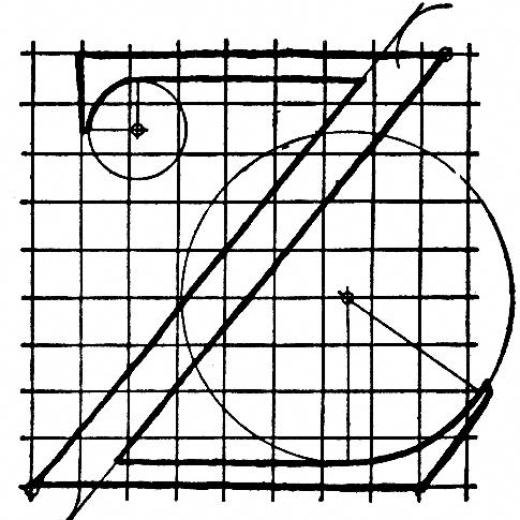Artist Entrepreneur: L for Lessons— The Artist’s Alphabet Guide to Writing About Your Art by Aletta de Wal
Welcome to Artist Entrepreneur Fridays, where we talk about the fun, wild and scary ride of succeeding as an artist entrepreneur of all stripes and types and mediums.
Welcome back guest columnist, Aletta de Wal. She specializes in helping visual artists succeed in their fine art careers. She posts regularly on “The Artist’s Alphabet Guide to Writing About Your Art” and other success tips for fine artists on the topic of writing. This week it’s L for Lessons, on about writing about your art — essential keys to business and artistic success. Enjoy!
***
One of my clients recently asked me to help her design a series of classes about a watercolor technique she has developed for beginners. My work with her inspired this post.
I highly recommend starting with a mind map to help you select what you want to convey in your course. Here’s an example the “big picture” visual draft I created that you can use to write your own class designs and get the word out to potential students.
Giving art lessons can help you achieve multiple goals. The bonus is that the more you teach others, the more you learn from interacting with your students to master your own skills.
- You demonstrate your credibility as an artist, because you must have a certain level of mastery of what you teach before you can teach it to others.
- You “pay it forward” when share your experience with others.
- You increase your visibility with art lovers, amateur and professional artists.
- You generate income from teaching. Students often become collectors as they get to know you and your work.
Before you can design lessons to achieve your goals, you need to be clear on the benefits to your audience. You probably have a fair idea of what you want to teach, but you need to look at your content from the perspective of people who may benefit from your lessons. You will also need this information to write a description of the course for prospective students:
- W.I.F.M.? – “What’s in it for me?” How will their knowledge and/or skills be different when they have completed your course? How will they feel when they experience your teaching?
- What previous knowledge or skill, if any, will the student need? Can anyone take the course and benefit? Do you offer beginner, intermediate or advanced versions?
- What other resources do you recommend? If I can’t take the course at the time you teach, or the tuition is higher than I can pay right now, do you offer alternatives?
Now you are ready to consider topics for your lessons.
- Start with a central theme. For example, will you teach art history, a technique, materials or methods?
- Break that them into a series of topics that will become the focus of each lesson.
- Identify the subject matter, sequence of information and practice activities that will help the student learn.
The “voice” or style of communication you choose links your goals and audience.
- Are you a role model for people who have not yet reached your level of knowledge or skill?
If so, your lessons will be based mostly on your learning, experience and expertise. Your design will be content heavy and you will create more detailed reference materials and handouts. - Are you teaching other artists who are peers and have a similar background to yours?
If so, your learning and experience is a starting point for the group learning. Your design will be a starting pint and the activities you create will be a catalyst for having students share their knowledge and experience with each other. - Design your lessons to engage interest and curiosity. Regardless of whether you are a role model or a peer, your voice in teaching and written or visual resources must inspire confidence in your students that they can learn what you offer and be willing to do the further practice to master what you teach them.
Aside from designing your lessons, you will also need to write material for the various channels of communication you choose to promote and/or deliver your lessons. Here is an overview of writing considerations:
Print:
- Create a lesson plan for yourself. Include topics, timing, materials and notes for your presentation.
- Create handouts that you will print or offer as a download to students to support your lessons during and after the course.
- Create postcards or flyers to announce the course and let students know how to register.
- Create confirmation letters for participants, along the schedule, lesson description, directions on how to attend, materials required and any special instructions.
Digital:
- Convert print materials to digital format for downloads.
Web Site/ Blog
- Write promotional copy, confirmation of payment for web site
- Write blog posts about why you are offering the course before it happens and pots testimonials and photos afterwards
Social Media:
- Write a series of descriptions, reminders and thank you notes to be posted from the beginning of your marketing cycle to the course completion.
Audio/ Video:
- Write scripts for audio and video presentations of your classes and/or promotions.
Obviously there’s a lot of thought and planning behind each of these steps. Don’t let that stop you from getting started on writing those art lessons you’ve always wanted to teach. There’s lots of help online. Try this search “tips for creating art lessons” and you’ll find 1,290,000 places to start!
Next time M for Materials & Methods.
***
Aletta de Wal, Artist Career Training
 Aletta de Wal inspires fine artists to make a better living making art in any economy.
Aletta de Wal inspires fine artists to make a better living making art in any economy.
Aletta works with part-time, emerging and full-time visual artists who are serious about a career in fine arts. Aletta makes make art marketing easier and the business of art simpler.
More information at: http://www.artistcareertraining.com/artmatters-newsletter/


![Writing for Art Lessons c. 2012 Aletta de Wal [Click to Enlarge]](https://writersfunzone.com/blog/wp-content/uploads/2012/06/Writing-for-Art-Lessons-300x168.jpg)





